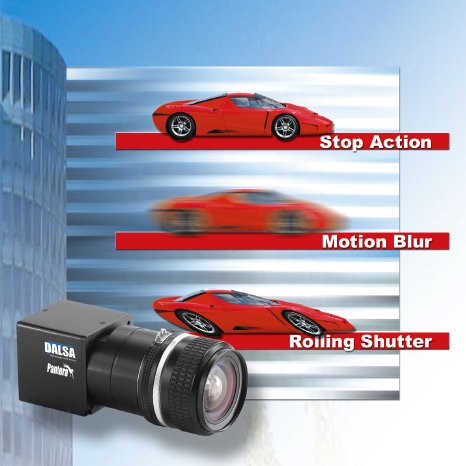To stop the action, the camera starts and stops exposure of all pixels in an array simultaneously, under electronic control. This functionality requires specific design features, and not all sensors have them.
Full-frame CCDs require mechanical shutters or strobing to achieve this result, introducing more cost and complexity into the vision system.
Frame-transfer CCDs may not provide the speed required, or may be difficult to cost-justify due to the extra silicon required for the storage area.
Standard rolling-shutter CMOS sensors distort images of moving objects because they only read out one line of their arrays at a time--by the time they read the next line, the object has moved. This distortion is a major obstacle for machine vision applications such as automated sorting or defect inspection--objects that that should be a "pass" are judged as "fail" because the image fed into the pattern-matching algorithms is distorted. For example, instead of valid round holes, the system would see unacceptable ellipses.
But interline CCDs and non-rolling CMOS sensors are ideally suited to imaging fast-moving objects. They capture crisp images without smear or distortion by using short exposure times and electronically shuttering all pixels simultaneously. In the case of DALSA's Stop-Action products, the exposure time is programmable (via Camera Link interface or additionally by external hardware signals).
DALSA's Stop-Action Cameras:
CMOS MegaPixel:
1M28-SA
1M75-SA
1M150-SA
Interline Transfer CCDs :
Pantera SA 2M30
Pantera SA 4M15
Messehinweis:
AUTOMATICA
Halle B1 - Stand 302
RAUSCHER
Johann-G.Gutenberg-Str. 20
D-82140 Olching
Telefon 08142/49045
Fax 08142/49053
E-Mail: info@rauscher.de
www.rauscher.de


